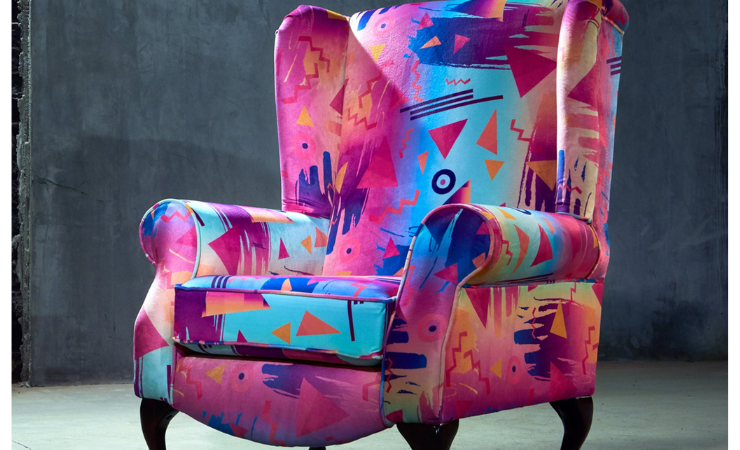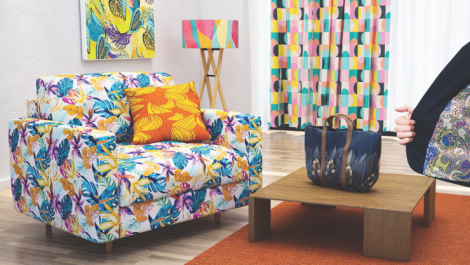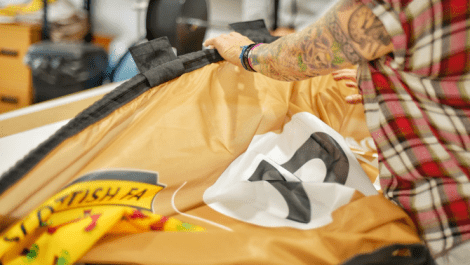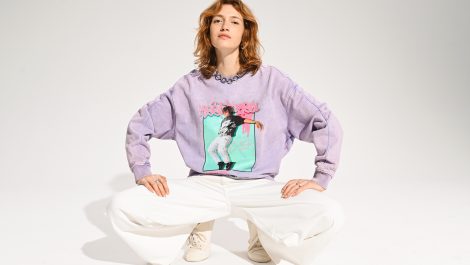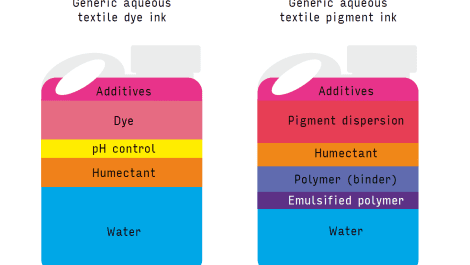Dye sublimation is now a well-established printing technology, and one of the most popular ways to print onto fabrics. Jade Schopman spoke to two leading companies to find out what sort of applications they are producing using dye sub.
In simplest terms dye sublimation, sometimes known as plain old ‘sublimation’, is a printing technique that involves heating inks so that they turn into a gas, permeate a substrate and then permanently bond with that substrate as they cool and resolidify. Embedding the ink in this way, rather than just printing it on top of the media, means that the finished print is less prone to fading, peeling, cracking and a multitude of other problems that can arise with alternative methods. The whole process can take less than 20 minutes from design through to production.
So far so good, but why is now an ideal time for printers to consider investing in dye-sub technology? ‘Sublimation printing is an easily adopted process as it generally requires just a printer and a form of fixation, meaning a heat press or a calendar,’ explains Xpres product manager Grant Cooke. ‘Entry-level hardware offers flexibility for low-volume production and personalisation for print on demand, plus the versatility to print to both textiles and rigid substrates such as mugs, coasters and giftware.
‘Sublimation printing enables businesses to offer a wide range of applications in house, on demand and in a timely manner; it is perfect for producing sportswear, apparel, soft signage and giftware, all using the same process.’
Prior to digital printing, reproducing images on items such as T-shirts required fairly involved and labour-intensive analogue processes, such as screen-printing.
The surge
According to a report from Research and Markets, the Dublin-based market research giant, the global dye sublimation apparel market is set to grow to be worth $8.1 billion by 2027. This growth, which will involve a 12.9% CAGR during the forecast period, is dependent on a number of factors including the increasing number of clothes being printed across the world, consumers spending more on personalised items, the time saving benefits of the technology and the growth of online marketplaces selling personalised and printed garments.
In the report Research and Markets said, ‘The demand for dye sublimated apparel is boosted by the huge volume of clothes dyed in the market. The latest printheads provide higher print speed and an automatic circulation system, hence decreasing downtime. The customers are encouraged to dye their clothes with high quality due to the decreased amount of time and higher production of photographed and printed garments.
‘The sportswear industry has moved to sublimation printing as it is a less costly method. Moreover, it is a sustainable printing process that consumes less time. The demand for appealing and fashionable sportswear apparel has been increased due to the growing style and fashion trend among Generation Z. In addition, the demand for sublimated sportswear has been driven by the increasing awareness about innovative designs and customisation options. The primary customers for sublimated sportswear are the mainstream customers like professionals sports teams.’
Popular products helping to drive this growth are set to include printed T-shirts, golf shirts, hoodies and leggings.
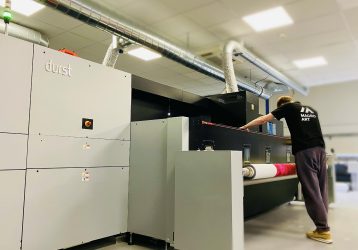
MacroArt’s new Durst machine
MacroArt
MacroArt recently became the first company in Britain or Ireland to invest in a Durst P5 TEX iSUB dye sublimation production press.
The Cambridge-based branding and signage specialist opted for the printer, which comes equipped with an integrated inline fixation (iSUB) for a one-step direct-to-fabric printing process, to meet the demand for high quality, high speed and sustainable graphics across exhibitions, live events, sport, property and retail.
The company also recently installed Durst’s Lift ERP integrated software platform to provide automated real-time scheduling, documentation, proofing and client support.
Michael Green, MacroArt’s managing director, said, ‘Investing in the P5 TEX iSUB was a natural progression and one that doubles our capacity and changes a two-step process into a very fast one-step process.
‘Having the ability to stitch two materials together online with no chop and change, means virtually no waste of materials which is extremely important with rising costs and shortages and is exactly the kind of feature that adds value to our customers. The only thing dye-sub can’t do which I wish it could is a 5m offering for backdrops. The 3m is great and has helped us a lot but I believe there is a gap waiting to be filled and if a stable 5m machine was invented, I’d buy one.
‘The dye-sub process is completely stable and odourless. You could put a large exhibition graphic in the washing machine, fold it away in your luggage to take it across the world and it will not run or crease up. The reusability and colour range is just so impressive.’
Before investing in the Durst machine, the company opted for the Durst Rhotex 322 8 COLOUR 3.2 dye sublimation printer, Epson Surecolour dye sublimation paper printer and the Monti Antonio 3.2 roll to roll sublimation machine.
Mr Green said some stand-out dye-sub applications include hanging graphics, lightboxes, sport banners and museum wraps.
He added, ‘We recently did some wall graphics for a company which turned out beautiful and I just know we would not have won that project using our old machine. It is four times faster with good quality. The look and feel of it is just beautiful and our clients were very happy with the results.’
Mad Chair
Mother and daughter team Tracy and Remy Reed created furniture company Mad Chair to bring their wild chair designs to life using dye-sub.
The Lancashire-based founders both have an immense love for off the wall interior design, but after browsing the high street and online market, there was nothing that lived up to the look of what they wanted to create.
So they decided to intertwine their passion for design with their experience in the print industry and invest in an Epson SureColour F6300 from CMYUK. Now the company sends custom furniture to Canada, Australia, USA, and Germany.
Ms Reed said, ‘We used to print on big throws, furniture chairs, print our own canvases. I think people liked the fact that it was locally finished, and we have built a fantastic presence and reputation on LinkedIn. We once had an interesting order from Scotland to create a chair with the Scottish thistle printed on for a hotel. He loved the results and the only way to do it properly was to use dye-sub.
‘Customers don’t usually specifically ask for us to use dye-sub, I think it helps us keep some mystique about how we produce these personalised pieces.
‘One thing I wish dye-sub could do is print onto leather, it would really give us an edge on something different and would mean we could print on bags and things like that. But all in all, dye sub is so easy to use and I can’t see us switching to use any other technology at this point. I wouldn’t even switch from using Epson. Its machines are such good quality and much cheaper than a Canon inkjet.
‘We are planning to open a retail premises soon, where we hope to have more of a lifestyle store with wallpaper, curtains, pillows. We are bringing the high street back so watch this space.’

